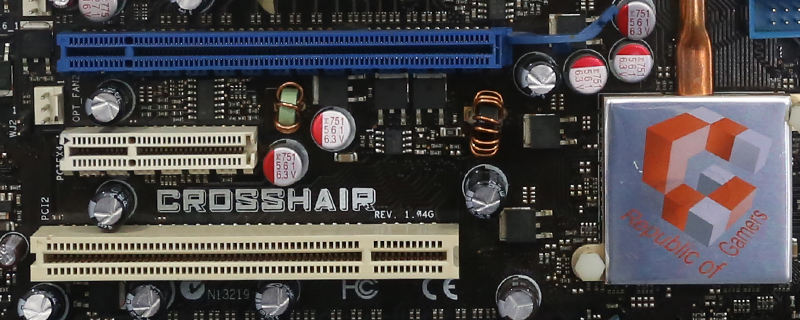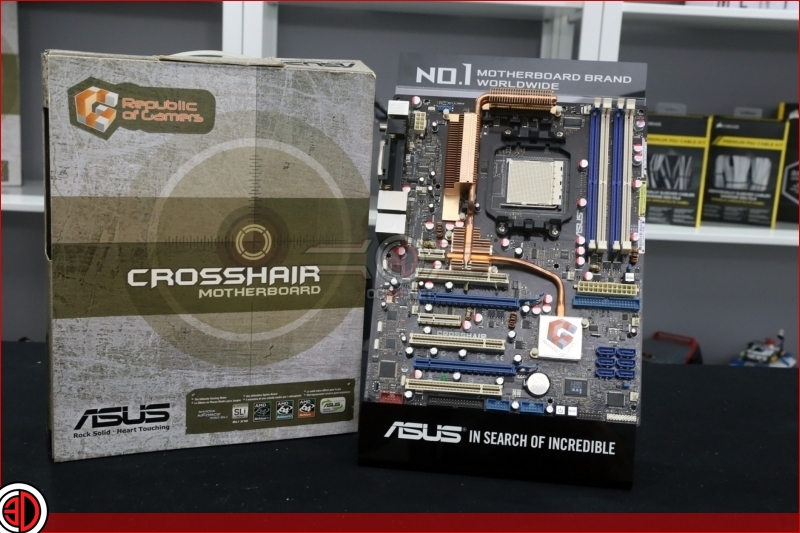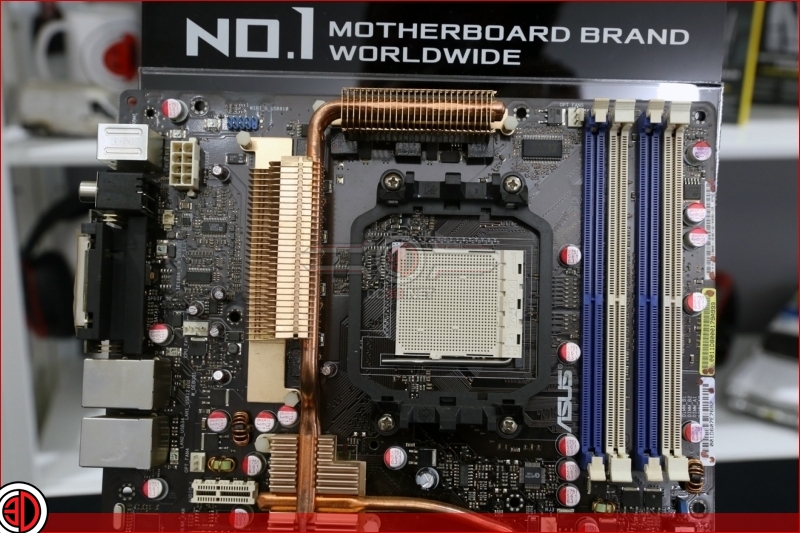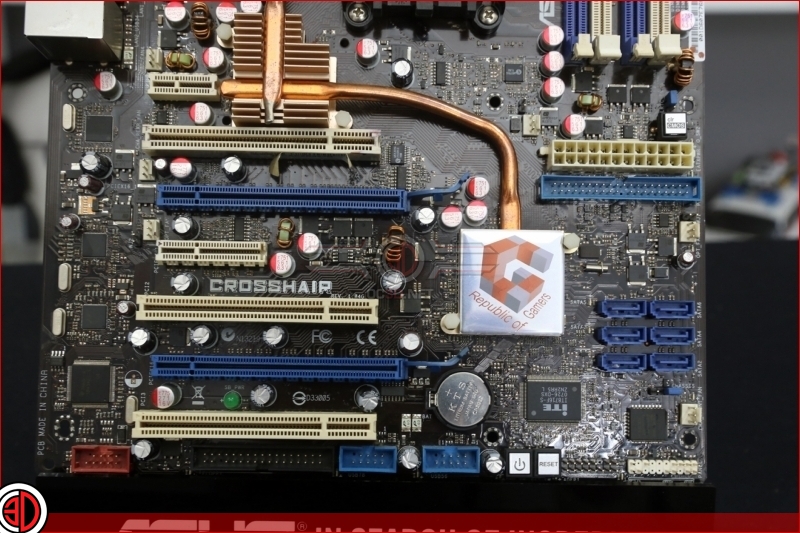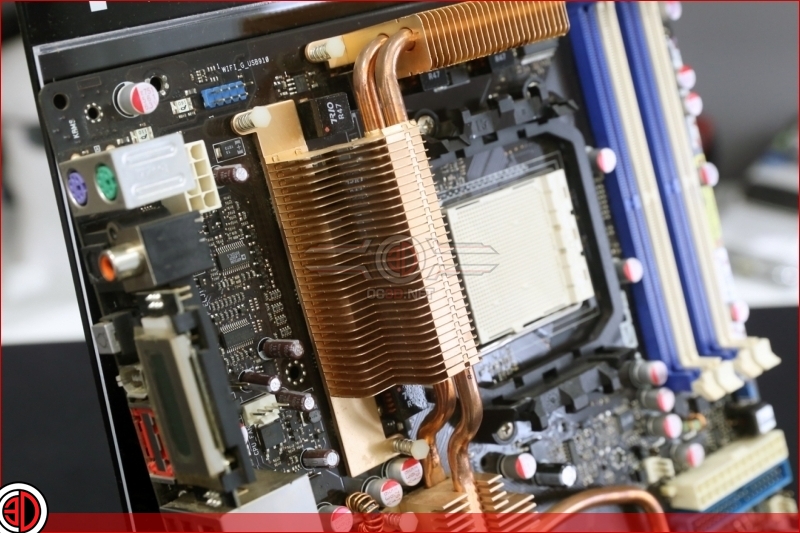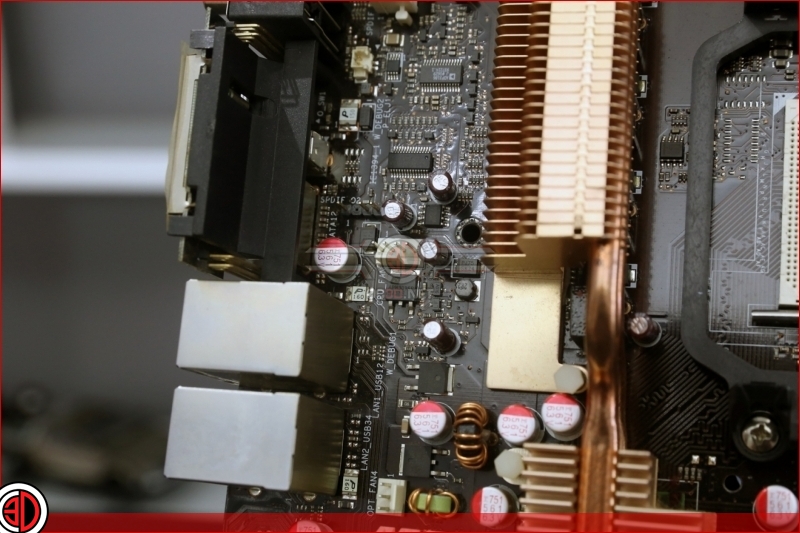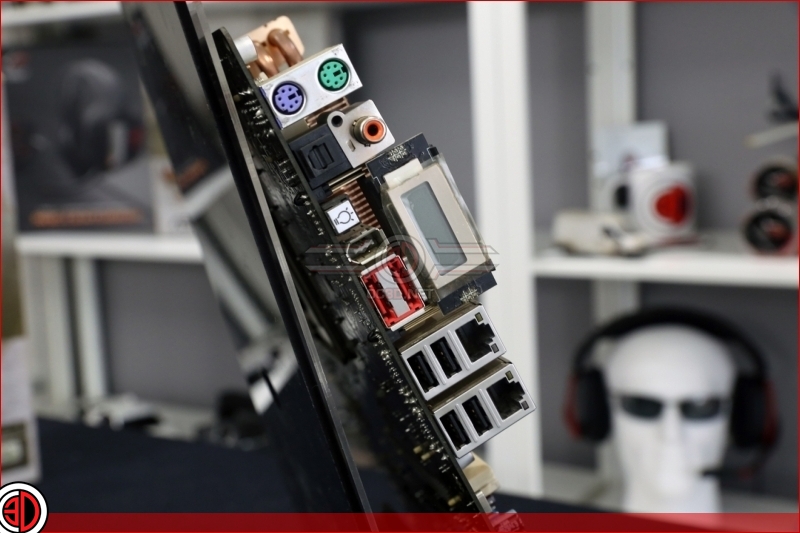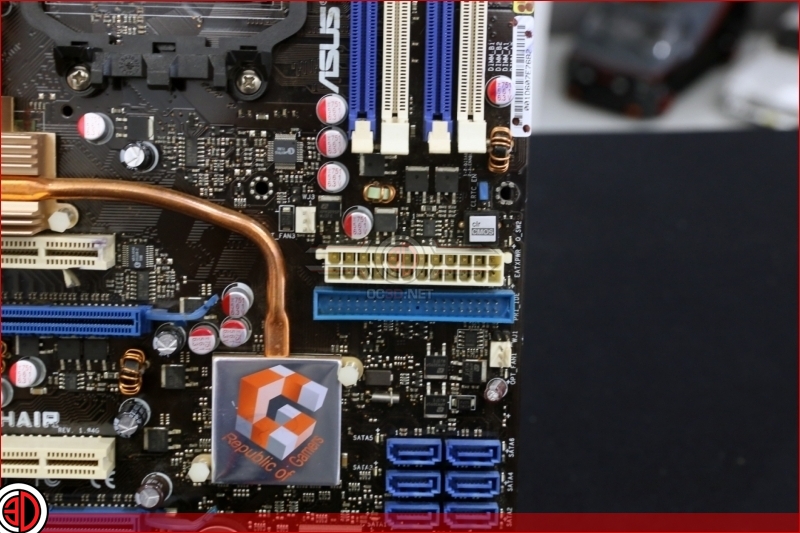ASUS Crosshair Evolution
Crosshair
Remember when we thought this was the bees knees?! It’s a perfect demonstration of how far motherboards have come in terms of looks and features that even the Crosshair 1, a mere 11 years old, looks like it came from the time when you might take one of those new fangled steam trains to work. Heck times have changed so much that the chipset which beats at the heart of the Crosshair is the nVidia nForce 590. From the days when nVidia did more than just produce GPUs and gaming tablets. Copper was king back then, the heat dispersal option of champions and the Crosshair wears its heatpipe proudly. The southbridge, northbridge and power components are tied together and cooled by something which reminds us of our central heating. It’s fair to say that we don’t miss the separated south and north bridge. Other things that you might notice are six vertical SATA ports, here in SATA II trim. Of course SATA ports were still new a decade ago so there is also an IDE connector which promises speeds all the way up to a whopping 133 UDMA. Not that any of us could afford 133 UDMA HDDs back then, but its nice to have the possibility, a bit like the U.2 ports today. For those who enjoyed taking their life in their hands and flashing the BIOS we even have a floppy drive connector, which even here was being chided for its anachronistic placement in a ‘modern’ motherboard.
PCI express had just started to overtake AGP and legacy PCI as the slot of choice and the Crosshair boasts 1 x16 slot, 1 x4 slots, and 3 PCI 2.2 compatible slots. We know many people who still have PCI based hardware they wish they could use, and the sheer number of them here prove how popular it was. Round the back there is a very motley collection of bits and bobs showing how the Crosshair was at the forefront of current thinking, but that the ideas we take for granted these days hadn’t fully formed. So yes there are PS2 ports for your keyboard and mouse, and four USB 2.0 ports alongside the twin GigaLAN. All stuff we’re used to. There is also two eSATA ports (so new they are called SATA On-The-Go), a SPDIF, an LCD Post and a Firewire port. The Firewire port enables the connection of “digital camcorders”. Oh how swiftly that area of the market bloomed and died.
Two areas that are worthy of note though sit at either end of the good idea/bad idea scale. Firstly just look at how many capacitors there are on the motherboard. Strewn all over the shop as if they have been fired at it from a blunderbuss. Also the power phase still has copper wire wrapped elements. I mean, blimey. Yet at the other end of the scale the Crosshair is the first (only?) motherboard we can think of that took the brave step of moving the ATX 24 connector. With longer GPUs this placement was untenable, but it’s great to see them trying something different.
Onwards to the Crosshair 2.
Â



